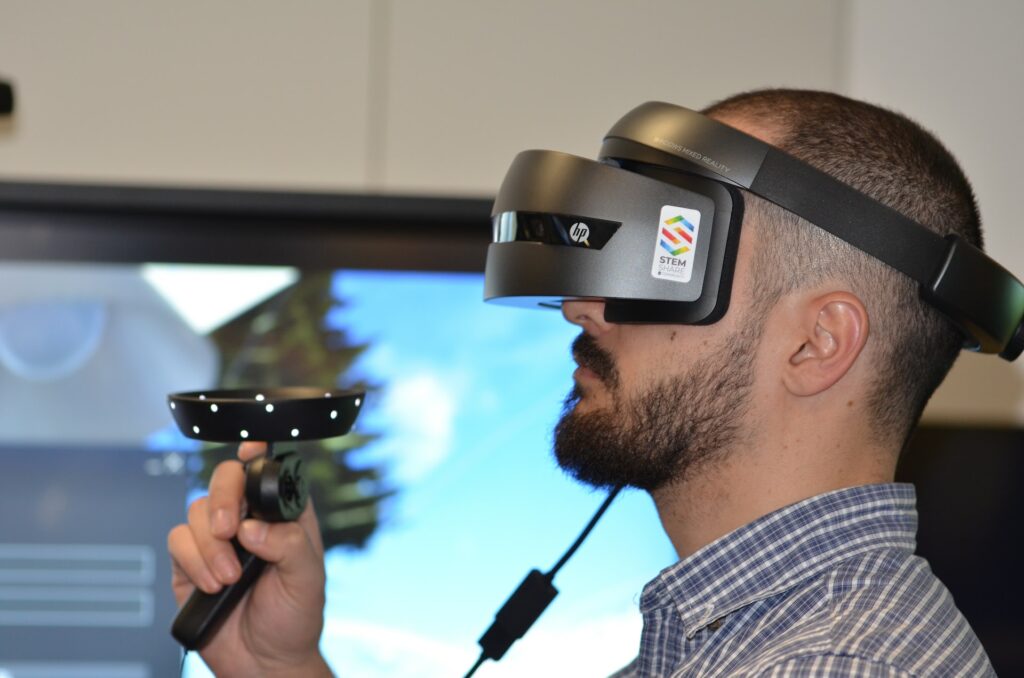Step into a world where the lines between reality and fantasy blur, where you’re not just playing a game, but living it. Welcome to the realm of Virtual Reality (VR) gaming. As technology gallops ahead, VR gaming is rapidly evolving, promising to revolutionize the way we play.
The future of VR gaming isn’t just about immersive experiences, it’s about creating a whole new reality. It’s a future where players can interact with the game in ways never thought possible. From tactile feedback to full-body motion tracking, the possibilities are endless and exhilarating.
Future of VR Gaming
Venturing deeper into the journey of VR gaming unveils exciting prospects. The forthcoming advancements promise an accelerated leap in gaming experiences, driven by the evolution of VR technologies and the launch of new VR gaming systems.
Evolution of VR Gaming Technologies

Advancements in VR gaming technologies continue. Haptic suits that allow players to feel in-game interactions bring realistic experiences. Companies like TeslaSuit are pushing the envelope with full-body haptic suits that provide virtual touch, climate control, and motion capture. This isn’t the stuff of science fiction. It’s happening right now, poised to propel VR gaming to new heights.
VR headsets, which delivered incredible visual fidelity, have now evolved to become lighter and more wearable, mirroring the design philosophy of everyday glasses. Panasonic’s prototype VR glasses offer ultra-high-definition visuals while ensuring user comfort and convenience. Moreover, AI integration in game development creates dynamic, responsive environments, enabling games to adapt according to players’ behavior.
Upcoming VR Gaming Systems

New VR gaming systems, set for release, are garnering anticipation. Oculus Quest 3, from Facebook’s Reality Labs, allegedly brings improvements in power and performance. It integrates eye-tracking technology, improving user interactivity and gaming realism.
PlayStation VR 2, embraced by Sony for the next-generation PlayStation console, tantalizes with the promise of richer, more immersive games. It’s rumored to include improvements such as 4K resolution, field view enhancement, and haptic feedback in controllers.
While these systems remain under development, they encapsulate the next evolutionary leap in VR gaming, fulfilling the promise of immersive, interactive experiences that blur the boundaries between the virtual and real worlds.
The Role of AI in the Future of VR Gaming
Looking ahead, AI integration emerges as a force to reckon with, transforming the face of VR gaming.
AI Enhancing VR Gaming Experience
Artificial Intelligence (AI) significantly enhances the VR gaming experience, particularly in terms of realism. It provides dynamic, adaptable environments, crafting responsive and intelligent Non-Player Characters (NPCs) that adapt and react to player actions, as seen in titles like “Half-Life: Alyx”. Moreover, AI pairs with biometric sensing technologies, tailoring gameplay based on players’ physical responses. For instance, a racing game might become more challenging if the player’s heart rate increases, amplifying excitement and engagement.
In contrast, AI’s role in enhancing immersion extends beyond gameplay. It supports advanced spatial audio processing, better matching audio cues with virtual settings—an enhancement integral to full sensory immersion. The integration of AI in VR also offers real-time object and scene recognition, allowing for more intuitive interactions within the virtual environment. Hence, AI isn’t merely improving the VR gaming experience; it’s revolutionizing it.
AI-Driven Game Development for VR

AI-driven game development marks a profound shift in how VR games are conceptualized, designed, and implemented. Traditional game design, with its labor-intensive methods, gives way to AI systems that create sophisticated, unpredictable environments procedurally. One such example is “No Man’s Sky”, a game in which its universe, filled with countless planets and species, was all generated procedurally.
AI-driven development also leads to autonomous VR characters. Using neural networks, developers enable NPCs to learn and adapt, exhibiting human-like behavior that contributes to immersive and interactive overtures.
Offer More
The future of VR gaming is undeniably bright, teeming with potential. As high-resolution displays, haptic feedback, and AR integration continue to evolve, they’re shaping an immersive gaming landscape. Titles like “Half-Life: Alyx” and “Beat Saber” are just a glimpse of what’s to come. With the advent of haptic suits and systems like Oculus Quest 3 and PlayStation VR 2, the gaming experience is set to be more dynamic than ever.



